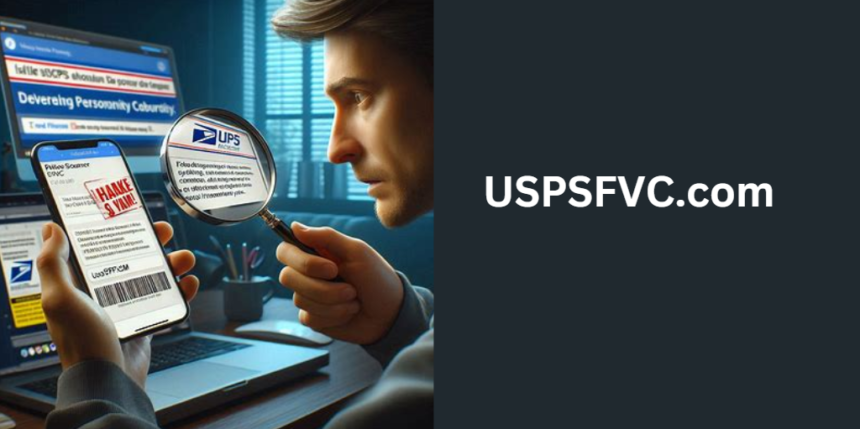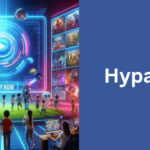Many people rely on USPS (United States Postal Service) for package deliveries, which is why scammers take advantage of this trust. USPSFVC.com is a fraudulent website that cybercriminals use to trick individuals into providing sensitive personal information. If you have received a text or email directing you to this site, it’s essential to understand that this is a scam designed to steal your details.
This guide will break down exactly how the USPSFVC.com scam works, how to protect yourself, and what to do if you’ve already fallen victim. With phishing scams on the rise, staying informed is your best defense.
How the USPSFVC.com Scam Works
Scammers use phishing tactics to impersonate USPS and lure victims into clicking on malicious links. Here’s how the USPSFVC.com scam typically operates:
- Fake SMS or Email Notification – You receive a message claiming that your USPS package is delayed, requires verification, or has an issue.
- A Link to USPSFVC.com – The message includes a link to a website resembling USPS, but it’s actually a fraudulent site.
- Request for Personal Information – Once on USPSFVC.com, you might be asked to enter your name, address, credit card information, or even Social Security number.
- Data Theft & Financial Fraud – If you enter your details, scammers can use them to steal your identity or commit financial fraud.
These scams are highly effective because they create a sense of urgency. People often panic and enter their information without verifying if the request is legitimate.
Real-Life Examples of USPSFVC.com Scam Messages
Many victims have reported receiving phishing messages directing them to USPSFVC.com. Here are some common examples of what these scam messages may look like:
| Scam Message Example | What It Means |
|---|---|
| “USPS: Your package delivery is on hold. Verify your details here: USPSFVC.com” | Creates urgency to make you act fast |
| “Final notice! Your package is waiting. Click USPSFVC.com to confirm address.” | Pressures you to click the fake link |
| “USPS Alert: Your shipment could not be delivered. Reschedule here: USPSFVC.com” | Tricks you into thinking there’s an issue with delivery |
These messages often contain poor grammar, odd phrasing, or generic greetings like “Dear Customer.” Recognizing these red flags can help you avoid falling for the scam.
The Dangers of Engaging with USPSFVC.com
Visiting USPSFVC.com and entering personal details can have serious consequences, including:
- Identity Theft – Scammers can use your personal information to open accounts or commit fraud in your name.
- Financial Loss – If you enter your credit card details, scammers can make unauthorized transactions.
- Malware & Spyware Risks – Clicking on links from phishing messages may install harmful software on your device, tracking your activity or stealing passwords.
Even if you didn’t enter information, simply clicking the link can expose your device to security threats. It’s crucial to take immediate action if you suspect you’ve interacted with a fraudulent site.
How to Identify a Fake USPS Website Like USPSFVC.com
Distinguishing between a real and fake USPS website can save you from falling victim to scams. Here’s what to check:
- Check the URL Carefully – Official USPS websites always end in “.gov” (e.g., www.usps.com). Fake sites like USPSFVC.com may use “.com” or slight misspellings.
- Look for HTTPS Security – A secure USPS site will have “https://” and a padlock icon in the address bar.
- Avoid Suspicious Requests – USPS will never ask for personal information via text or email.
- Check for Typos and Poor Design – Many scam sites have spelling errors or unprofessional layouts that don’t match the real USPS website.
Being cautious and verifying URLs before entering sensitive details can prevent fraud.
What to Do If You Clicked on USPSFVC.com
If you accidentally clicked on the link or entered information, follow these steps immediately:
- Do Not Enter Any More Information – If you haven’t already provided details, exit the site immediately.
- Check Your Bank Statements – If you entered financial information, monitor your bank and credit card statements for unauthorized transactions.
- Change Your Passwords – If you suspect your details were compromised, update your email, USPS, and bank passwords.
- Scan Your Device for Malware – Run a security scan to check for potential infections.
- Report the Scam – Notify USPS, the Federal Trade Commission (FTC), and your mobile carrier.
Taking quick action can minimize potential damage and prevent further fraud.
How to Report the USPSFVC.com Scam
Reporting phishing scams helps authorities shut down fraudulent sites. If you’ve encountered USPSFVC.com, report it using the following methods:
- USPS – Forward the scam text or email to [email protected].
- Federal Trade Commission (FTC) – Submit a complaint at reportfraud.ftc.gov.
- Your Mobile Carrier – Forward suspicious texts to 7726 (SPAM) to report them.
By reporting these scams, you help prevent others from becoming victims.
Legal Actions Against USPSFVC.com and Other Phishing Scams
Authorities are actively cracking down on fake delivery scams, including sites like USPSFVC.com. In recent years, USPS and law enforcement agencies have worked together to:
- Shut down fraudulent websites – Domains used for phishing are reported and taken offline.
- Arrest cybercriminals behind scams – Law enforcement agencies investigate major phishing rings.
- Increase public awareness – USPS issues alerts to warn customers about common scams.
Despite these efforts, new phishing sites pop up regularly. Staying informed is the best defense.
FAQs About USPSFVC.com Scam
Why do scammers use USPS-related scams like USPSFVC.com instead of other companies?
Scammers use USPS-related phishing scams because USPS is a widely trusted postal service with millions of customers. Many people expect package deliveries regularly, making it easier for scammers to trick victims into believing their messages are legitimate. Since USPS does not typically send tracking updates via text unless requested, scammers exploit this lack of awareness to deceive recipients.
Can scammers use USPSFVC.com to hack my phone just by clicking the link?
Simply clicking the link may not immediately hack your phone, but it can expose you to risks. Some phishing websites attempt to install malware or spyware that could compromise your personal data. It is always safer to avoid clicking unknown links and run a security scan on your device if you suspect exposure to a fraudulent site.
How do scammers create fake websites like USPSFVC.com?
Cybercriminals register domain names that resemble official sites and design webpages that mimic real USPS pages. They use cheap hosting services and encryption tools to make the website appear authentic. These sites are often taken down quickly, but scammers continuously create new ones to keep deceiving people.
Are international users targeted by the USPSFVC.com scam, or is it only in the U.S.?
While USPS is a U.S.-based service, international users can also receive these phishing messages. Scammers send mass texts and emails to random numbers, hoping someone will fall for their trick. Even people outside the U.S. who aren’t expecting a USPS package can be targeted.
Can law enforcement track the scammers behind USPSFVC.com?
Tracking scammers is challenging because they often operate from different countries, use anonymous hosting services, and frequently change domain names. However, cybersecurity experts and government agencies work together to investigate phishing networks, take down fraudulent sites, and prosecute criminals when possible. Collaborations between USPS, the FBI, and international agencies help in combating these scams.
Conclusion
The USPSFVC.com scam is a dangerous phishing attempt that preys on unsuspecting victims. By understanding how these scams work, spotting red flags, and taking immediate action, you can protect yourself and others.
Always verify messages before clicking on links, report scams to authorities, and stay informed about new phishing tactics. Cybercriminals are constantly evolving their methods, but with awareness and caution, you can stay one step ahead.If you found this guide helpful, share it to help others avoid falling for USPS phishing scams!
More Posts Like
Ricoh Aficio MP C3504 Chiclayo: The Ultimate Guide
The Ultimate Guide to Fintechzoom.com Nickel
CrypticStreetCom: The Ultimate Guide to Crypto, Gaming & Tech








